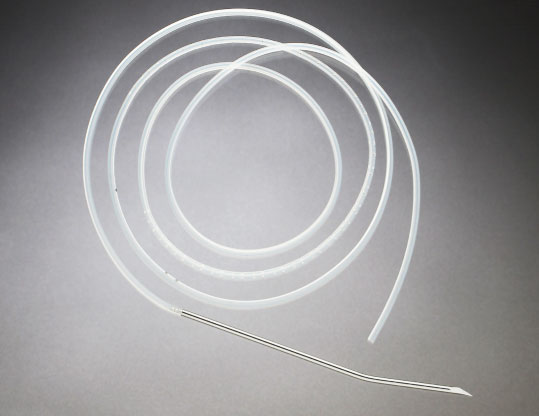Description
Cardinal Health SU130-0325 - Silicone Round Drains with Trocar, 19 Fr (1/4"), Perforation: END, 10/BX
Jackson-Pratt Round Drains
Jackson-Pratt round drains are available in both silicone and PVC per physician preference and feature a radiopaque stripe running the entire length of the drain tubing for X-ray detection.All perforated round drains come in a one-piece design and are hubless.
Feature
- Jackson-Pratt flat drains are made of a silicone elastomer for softness and flexibility, featuring.
- Injection molded forstrength and drain integrity.
- Low-proile, hubless design to help promote tissue plane approximation.
- Innerlumen ribbing to help prevent drain collapse and clogging and help preserve drain patency.
- Silicone thatis barium impregnated for X-ray detection of drain.
What is Wound Darin?
A surgical drain is a tube used to remove pus, blood or other fluids from a wound. Drains inserted after surgery do not result in faster wound healing or prevent infection but are sometimes necessary to drain body fluid which may accumulate and in itself become a focus of infection.
Silicone Wound Round Drains
Round Drains. Round perforated silicone drains are available for use with a closed drainage system. These drains also have a radiopaque stripe for radiographic detection and are available in several sizes (eg, 7, 10, 15 or 19 Fr) with 5 cm. and 10 cm markings to aid the surgeon in drain placement. Round silicone drains are available with or without a trocar.

Trocar
The trocar is a sharply pointed shaft, usually with a three-sided point to help insert the drain into the patients body. One end is inserted in the patients wound and the other end is connected to the drain and the evacuator.
Preparing and Inserting Drains
- Drains are designed for single patient use only; they should never be reused.
- Drains are kept sterile and ready for use; no device or equipment should be opened until the surgeon specifies the style and size needed.
- Verify if the patient has any sensitivity or allergy to latex; if present, do not use a drain or other tubing with any latex components.
- The scrub person maintains the sterility of the drain until it is connected to the sterile end of the drainage tubing.
- All tubing/reservoir connections must be physically tightened and secured; the connections should not be completely obscured by wrapping them with tape.
- The drain site should be dressed separately from the operative incision site. A nonadherent dressing can be used as the contact layer around the drain. Gauze dressings can be cut into a Y-shape to fit snugly around the base of the drain.
- Avoid placing tension on the drain as well as kinks in the drain tubing; a gentle loop can be made and secured with tape at the time the dressing is applied.
- Collection devices connected to passive drains must be kept well below the level of the body cavity where the drain is inserted and below the level of the drainage tubing to prevent retrograde flow. The amount of drainage should be documented.
- With closed or negative pressure vacuum drains, the circulating nurse must check the suction level to ensure that it is set according to the surgeons order or activate the suction as appropriate for the system being used.
- If ordered, a radiograph may be taken to verify proper placement of the drain.
- Care should be taken to protect and secure drains and drainage systems. For example, drains may become tangled in the patients other lines and equipment (eg, IV tubing, electrocardiogram leads), clothing, or linen and accidentally pulled out, which can result in pain or bleeding.
